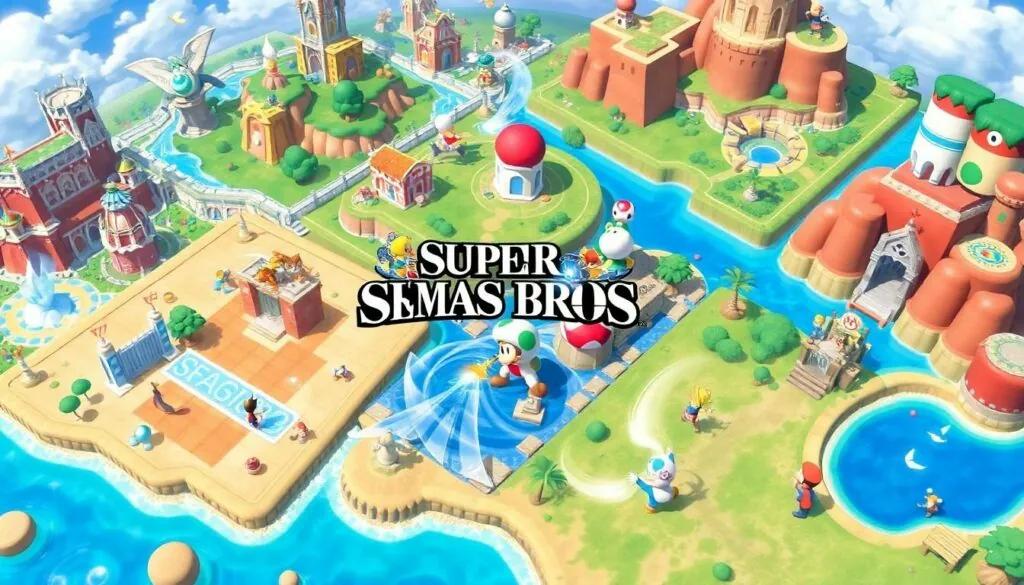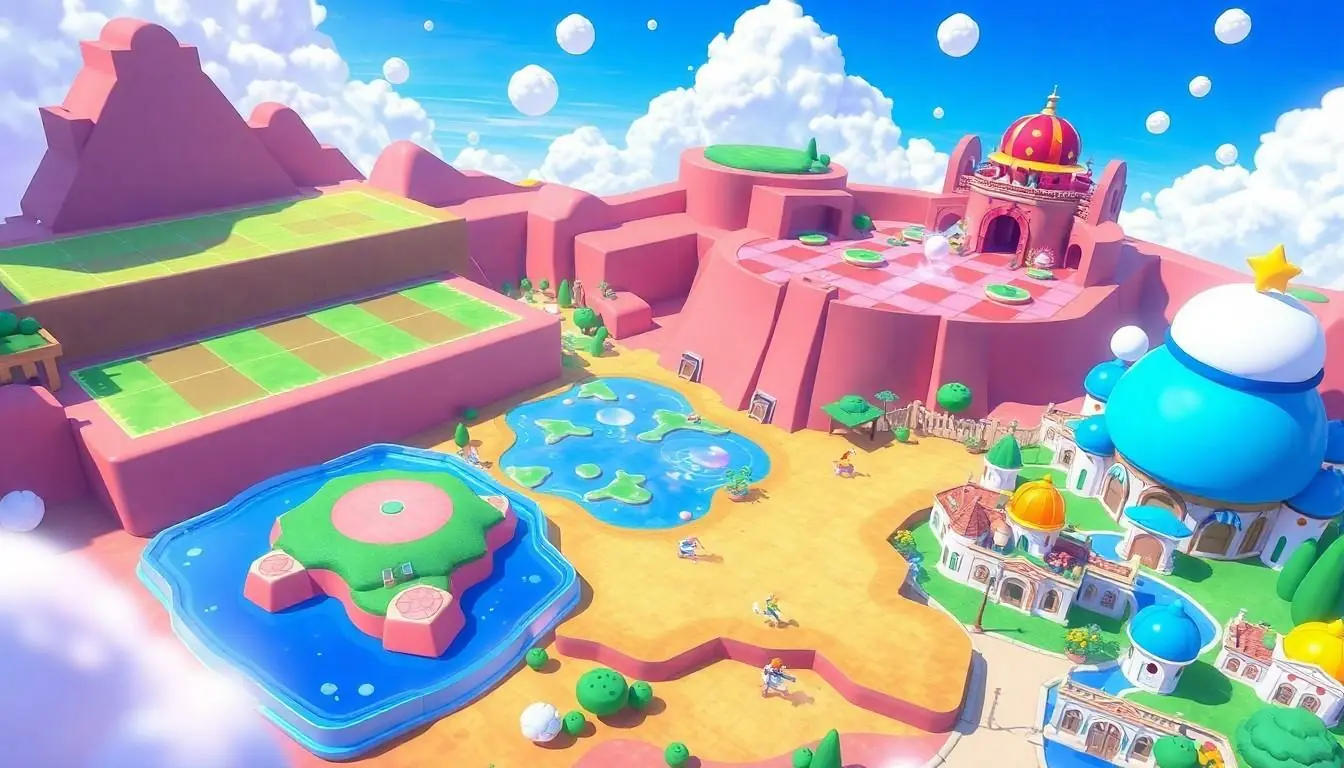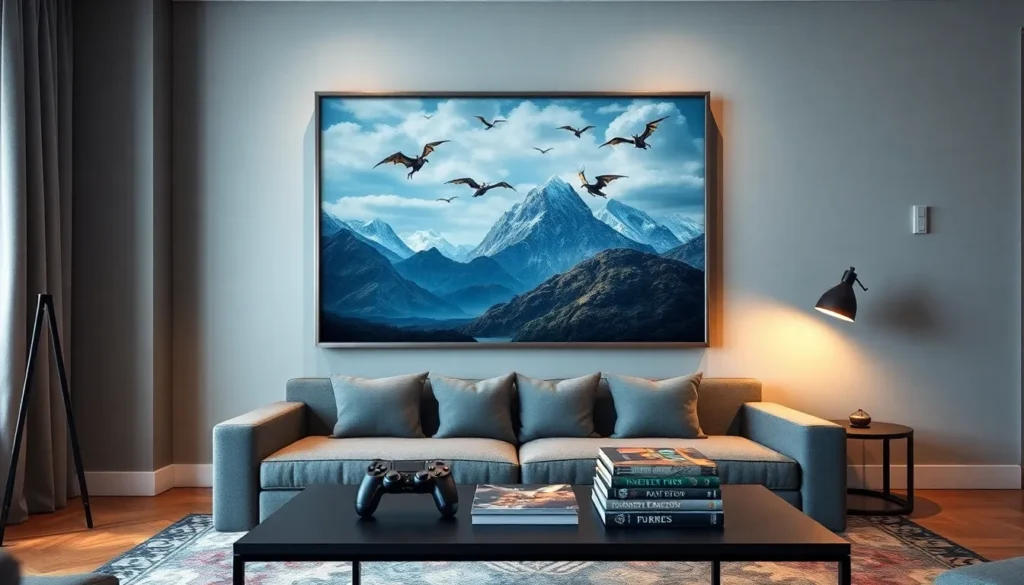In the colorful chaos of Super Smash Bros, the maps are more than just backdrops; they’re the battlegrounds where legends are made and friendships are tested. Whether it’s the nostalgic feel of Final Destination or the whimsical charm of Yoshi’s Island, each stage brings its own unique flair and challenges. Players often find themselves not just fighting opponents, but also navigating the quirks and traps of these vibrant arenas.
Table of Contents
ToggleOverview of Super Smash Bros Maps
Super Smash Bros maps play a crucial role in shaping the competitive experience. Each map features unique characteristics that impact strategy and gameplay dynamics. Dynamic elements often introduce varying challenges, pushing players to adapt their tactics.
Final Destination stands out as a fan favorite. This stage eliminates obstacles, resulting in pure one-on-one combat focused on skill. Players can engage without environmental distractions, leading to intense matches that emphasize character abilities.
Yoshi’s Island, on the other hand, contains interactive elements like raised platforms and walls. These features provide advantages for aerial combat and strategic maneuvering. Navigating the unique terrains of this stage requires players to think critically about positioning and movement.
Smashville presents a balance between open areas and platforms. The moving platform encourages creative combo setups, allowing players to catch opponents off guard. Adapting to its changing landscape adds depth to each match, requiring quick reflexes and decision-making.
Pokémon Stadium introduces transformation mechanics, altering the battlefield mid-match. This characteristic demands versatile strategies from players, as they must adjust to new stage layouts while battling opponents. Understanding the transformations enhances competitive play.
Familiarity with these maps enhances a player’s overall performance. Each stage offers a distinct experience, rewarding mastery and adaptability. By grasping how to leverage the unique attributes of each battleground, players gain a competitive edge in their matches.
Types of Super Smash Bros Maps
Maps in Super Smash Bros significantly impact gameplay dynamics. They fall into several categories, each offering unique experiences and challenges.
Classic Maps
Classic maps form the foundation of the Smash series. Final Destination stands out for its simplicity, removing environmental distractions and focusing solely on player skills. Battlefield, with its three platforms, adds strategic verticality while maintaining an open layout. Dream Land introduces an iconic stage design that includes puffballs and wind mechanics. Each classic map requires players to adapt their strategies to varying layouts, leading to different combat styles. Mastery of these classic arenas grants players a solid grounding for competitive play.
Modern Maps
Modern maps bring dynamic elements to the battlefield. Smashville features a moving platform that creates opportunities for combos and strategic positioning. Town and City adds a twist with its varied platform heights and seasonal changes, providing a fresh experience every match. Pokémon Stadium 2 incorporates transformation mechanics, altering the stage mid-fight and challenging player adaptability. These maps encourage players to think on their feet, requiring quick adjustments and innovative strategies to secure victory.
Themed Maps
Themed maps offer unique artistic designs and interactive elements. Luigi’s Mansion immerses players in a spooky environment, with changing lighting and environmental hazards. Bowser’s Castle includes intricate traps and lava elements, presenting a challenge for players to navigate. Spirit Train blends movement with stunning visuals, keeping players engaged with the shifting landscape. These themed maps enhance the aesthetic experience and introduce strategic complexities that enrich gameplay, making each match memorable.
Design Elements of Super Smash Bros Maps
Maps in Super Smash Bros feature distinct designs that significantly impact gameplay. Players must understand the various terrain features and interactive elements present in each stage.
Terrain Features
Terrain features define the gameplay dynamics in Super Smash Bros. Flat surfaces encourage aerial battles, while uneven terrain creates strategic opportunities. Different stages include platforms that alter movement, adding depth to combat. For example, Battlefield’s three platforms enhance vertical play, offering players avenues for escape and attack. Likewise, Yoshi’s Island’s sloped areas compel players to adjust their tactics. Players must account for these unique layouts as they battle opponents.
Interactive Elements
Interactive elements elevate the excitement of Super Smash Bros maps. Movable platforms in stages like Smashville create a constantly changing environment, challenging players to adapt quickly. Additionally, elements such as destructible structures or hazards can impact the match’s flow. For instance, Pokémon Stadium features transformations that change the battlefield, forcing players to reassess their approach. These dynamic characteristics enhance strategic depth and offer players unique advantages or challenges in every match.
Competitive Play and Map Selection
Maps play a crucial role in competitive play, influencing strategies and player performance. Understanding map dynamics enables players to gain a significant advantage during matches.
Map Dynamics in Tournaments
Tournament maps introduce distinct dynamics that elevate competitive play. Participants often analyze terrain layouts and interactive elements to develop tailored strategies. Platforms affect vertical gameplay, creating opportunities for chains of attacks. Players must also navigate obstacles that can hinder movements or create openings. Awareness of map transformations, like those seen on Pokémon Stadium, keeps competitors on their toes. Consistently evaluating map effects facilitates adaptive play styles and effective counter-strategies.
Popular Maps in the Competitive Scene
Certain maps dominate the competitive scene due to their balanced designs and engaging mechanics. Final Destination stands out as a staple, offering a straightforward stage that emphasizes skills without distractions. Battlefield frequently appears, with platforms that encourage aerial combat and combo opportunities. Smashville’s moving platform enhances strategic depth, making it popular for creative play. Town and City engage players with dynamic environments, adjusting to the flow of battle. Each of these venues presents unique challenges, shaping how players approach matches at all levels.
Community Feedback on Super Smash Bros Maps
Players actively engage with maps, expressing diverse opinions on their favorite stages. Familiar favorites such as Final Destination and Battlefield dominate discussions due to their simplicity and competitive balance. Feedback often highlights how these maps enhance skill-based gameplay. Players appreciate clear layouts that promote strategic depth, such as Yoshi’s Island and Smashville, which provide interactive elements for creative combat.
Some players prefer Classic maps for their nostalgic value, while others enjoy the complexity of Modern maps with their dynamic features. Themed maps attract attention for their unique designs, adding aesthetic enjoyment alongside gameplay challenges.
Player Preferences
Many players gravitate towards Final Destination for its clean design, which fosters pure combat experience. Others favor the variety offered by maps like Pokémon Stadium, where transformations keep strategies fluid. Feedback shows a strong preference for balanced gameplay; players enjoy maps that don’t favor specific characters. Opinions vary widely, with some advocating for more interactive features while others seek simplicity. Quality discussions continue to evolve as players share experiences, showcasing a diverse range of tastes.
Suggestions for Improvement
Players commonly suggest adding more balanced interactive elements across all maps. Increasing the diversity of terrain features appears important to many, as they believe it enhances strategic options. Adjustments to certain items’ spawn rates on various maps could also create more balanced gameplay experiences. Clearer visual indicators for hazards would significantly benefit all players, ensuring better gameplay awareness. Many hope that future updates consider these suggestions to refine the competitive experience and elevate overall enjoyment.
Conclusion
Super Smash Bros maps play a vital role in shaping both casual and competitive gameplay. Their unique designs and interactive elements create a rich tapestry of challenges that players must navigate. Mastery of these maps not only enhances individual performance but also fosters a deeper understanding of the game’s mechanics.
As players engage with various stages they develop strategies that adapt to the dynamic environments. This adaptability is crucial in competitive settings where every decision can turn the tide of battle. Community feedback continues to influence map design and improvements ensuring that the game evolves while keeping players engaged.
Ultimately the diverse array of maps in Super Smash Bros contributes to its enduring popularity and competitive spirit. Familiarity with each stage can empower players to elevate their game and enjoy the rich experiences that Super Smash Bros has to offer.








